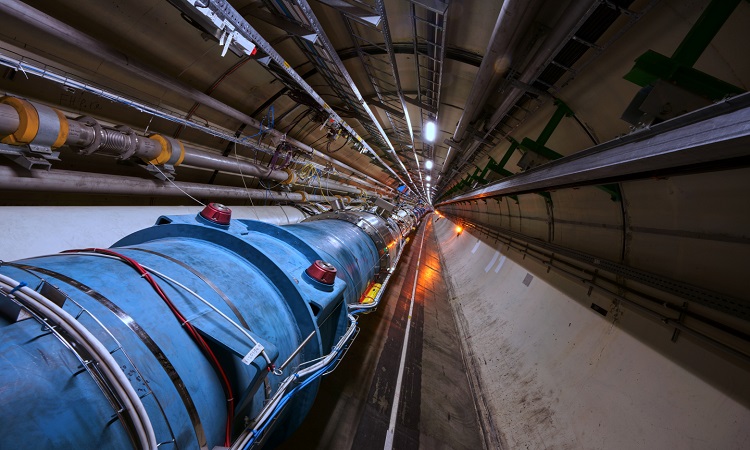A CERN team announces that they have observed a new type of particle composed of four quarks. A discovery that could help better understand the ways in which quarks, under the effect of the strong force, bind to each other to form protons and neutrons, present in the nuclei of atoms.
The quarks of elementary particles at the base of any form of observable (or baryonic) matter. These particles come together to form what physicists call hadrons, which include protons and neutrons, found in atomic nuclei.
In other words, if you had the ability to zoom in on all forms of observable matter, the smallest components, ultimately, would be the quarks.
An exotic particle never is seen before
To form these famous hadrons, quarks generally combine in groups of two and three. For a long time, however, physicists have theorized the existence of four-quark (tetraquarks) and five-quark (pentaquarks) hadrons. In recent years, experiments at the LHC have confirmed the existence of several of these so-called “exotic” hadrons.
An LHC team today announces the discovery of another such particle. According to the study, published on the arXiv preprint server, it too would consist of four quarks, with the difference that these are four heavy quarks of the same type: two charmed quarks and their antiquarks.
“So far we have only observed tetraquarks with at most two heavy quarks, and none with more than two quarks of the same type,” said an outgoing spokesperson for the LHCb Collaboration, Giovanni Passaleva. The study of a system will also allow us to test our theories under stress. ”
These particles, made up of unusual combinations of quarks, present themselves as veritable “laboratories” allowing researchers to study one of the four fundamental forces known to nature, essential for the binding of these particles.
Concretely, the LHCb team explains that they isolated this new tetraquark using a technique aimed at searching for an “excess of collision events”, also known as a “bump”, against a smooth background of events.
By browsing through several sets of data collected by the Large Hadron Collider from 2009 to 2013 and from 2015 to 2018, physicists then detected one of these “bumps” in the mass distribution of particles.
This bump would have a statistical significance of more than five standard deviations, which the usual threshold for claiming the discovery of a new particle. In addition, its mass seems to be suitable for that, theorized, of particles composed of four charmed quarks.




